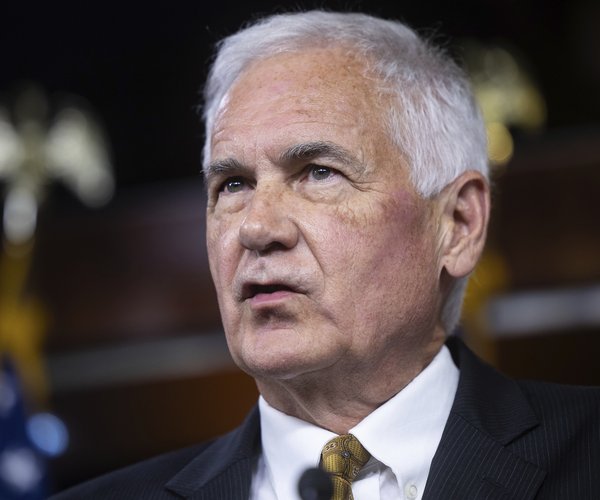Thirty years later, I still remember the presentation.
A major assigned to the 9th Strategic Reconnaissance Wing at Beale Air Force Base was speaking at the Lincoln Rotary on the then super top secret SR71 Blackbirds stationed just 32 miles away.
His talk was a general overview. The major deflected a number of questions from members such as the top speed of the SR71 since it was classified at the time. He did say they could get from Beale AFB in Yuba County to over Idaho in 15 minutes operating at reduced speed. (We now know the SR71’s top seed was 2,200 miles per hour since many details of the aircraft have since been declassified.)
The major’s response to that question and one point he made during his talk stuck with me.
The other was regarding the effectiveness of the SR71’s cameras. He shared a series of shots taken above a dock in Miami. Although he didn’t share exactly how high the SR71 was at when the photos were taken, it has an operational ceiling of 80,000 feet. The first photo was of the general Miami area, the second zeroes in on a square mile area, the third was of the Miami docks, and the fifth of an object laying face up on the ground. It was a Florida state license plate. You could clearly read the numbers and letters.
Such capabilities may not startle us as much today in the Age of Google Maps with its aerial views. But it should cause you to ponder if government photography capabilities were that precise and far-reaching in the 1980s, can you imagine what they are like today?
Government research has always been light years ahead of the private sector. It is what paved the way for the backbone of almost all major technology advances especially in the communications and information sectors.
There is little doubt the National Security Administration is capable of siphoning up millions of phone calls, e-mails, and Internet keystrokes each and every minute. For some, that is disturbing enough. But it is what happens after the data is collected that is alarming. The only way to mine that data quickly and effectively is to devise computer programs to rapidly decipher it for pertinent parameters. We are told they are only looking for suspected terrorist activity. Many of us would have minimal reservations with that. However, that isn’t the real problem.
It is what other computer programs could be written to mine the same data for other purposes.
We now know that Lois Lerner, one of the IRS officials at the center of the targeting of conservative political groups, was networking with other federal agencies such as the Federal Elections Commission in a bid to — take your pick — harass, undermine, or neutralize them.
If government safeguards on the massive data they collect are so loose that a low-ranking contracted employee like Edward Snowden can comprise them, imagine what behind-the-scenes bureaucrats could do.
Everybody seems focused on trying to prove — or disprove — that the White House was somehow involved in the IRS targeting. If it were, it actually would be comforting. That’s because Snowden has underscored the real problem. It isn’t whether we can trust the government, per se, but whether we can trust the people who work for the government.
How many Lerners are out there in a federal workforce of 4.4 million that operate away from public view who have personal political agendas? Her agenda may align with the White House but it is doubtful there is any connection except through the perception they are working for the same goals.
The real concern is what can renegades from prosecutors to regulators in government service ultimately due with all of the data being collected? Assurances that nothing will happen because of safety checks, whether they are secretive judicial oversight, policies or other mechanisms, do not hold water after the WikiLeaks episode and Snowden’s betrayal of the oath he took as a private federal contractor.
We are told to take comfort in that the NSA is above reproach.
Funny, they used to say the IRS was above reproach as well.
Defend the broad and basic warrantless information gathering on you and your neighbors all you want. Given the government’s capabilities 30 years ago to read license plates from 80,000 feet away, it is reckless to assume there are any real technological limits on their snooping.
All of that data is out there for mining for years to come. Who knows? Maybe the FBI will develop a computer program to detect a pattern on people likely to organize protests. Perhaps one can be put in place to mine the data for indications that might point to criminal activity. Then all the government has to do is go back and find the pieces “legitimately” and then ask for warrants. It all would loom legit under the constitution because you’d have no idea if the starting point was data they gleaned on a wholesale basis as the government would not admit to it.
Some pundits have wondered what the Founding Fathers would have thought about all this.
Had the NSA and its ability to snoop into the home of every American via cell phones or the Internet been in place in 1776 in a similar fashion for the communication vessels of the day there would have been no Founding Fathers.
King George would have been able to use the data to squash them quietly as part of his fight against terrorism.
This column is the opinion of Dennis Wyatt and does not necessarily represent the opinion of The Journal or Morris Newspaper Corp. of CA. He can be contacted at dwyatt@mantecabulletin.com or 209-249-3519.






